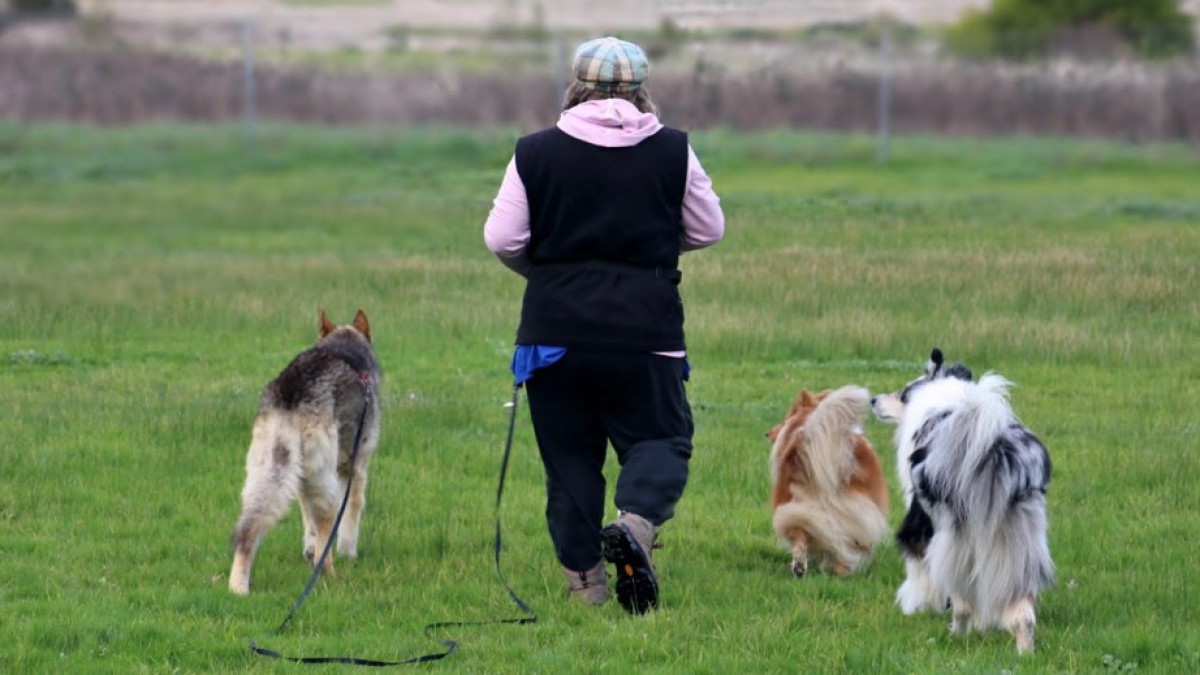For all the dogs who've touched our hearts
Set Your Dog Up For Success: Make Training Easier

Learn the techniques that make it possible to train your dog with greater success, less problems and more enjoyment for you both.

In the last blog I discussed how ignoring “bad” behaviour may not be as easy as it sounds. This blog explains how to train with greater success, less problems and more fun!

Set your dog up for success

Years ago when I first started taking puppy classes, I learned a new concept that I was eager to share.
I stood in front of my class and enthusiastically stated the importance of “Setting your dog up for success”. When I finished speaking, a man with a sweet young Kelpie looked at me and asked, “What does that actually mean?”
I opened my mouth to reply but stopped embarrassed when I realised I didn’t understand well enough to explain. I apologised, feeling pretty stupid!
Fifteen years later, managing my dogs’ environment, or setting them up for success, has become an integral part of our lives together. It's the first and most important thing anyone can do when training a dog.

Set Your Dog Up For Success: Sounds Simple?

The story of my instructing bungle highlights the problem with catchy phrases. They sound great, roll off the tongue easily and are appealing to use – especially when you’re learning.
Setting your dog up for success involves two fundamental techniques: management and antecedent arrangement. This may sound complicated, but it simply means to organise your dog’s environment so it is easier for them to learn.

Management:
Stop the Environment Working Against You

Management means to change the environment so it is harder for your dog to do things you don’t like. This can be part of a teaching program, or a way to limit behaviour for a life time.
Stuff dogs want is everywhere, it is easy for undesirable behaviour to be reinforced if your dog can get it freely. Management helps you control access to other reinforcers while your dog is learning.



Management and Recall, an Example

Teaching your dog to recall provides one of the best examples. People often ask too much of their dogs.
You may go to the park with food in your pockets, but if the environment is more interesting, food will be ignored. Think of all the wonderful things available to an off-leash dog: other dogs, people, fantastic smells, dead things, bugs, butterflies, running children, cats, poop, wildlife just to name a few. All of these things act as competing reinforcers for that bit of food.
You may find yourself calling and calling, futilely waving a smelly piece of sausage, but your dog is suddenly deaf as he bounces around greeting, sniffing, peeing and playing.
An excellent management tool is a lead. A long lead attached to a comfortable harness can give your dog a more interesting walk in safe areas and prevent him from being reinforced for running away. You can drop it and allow him to drag it or you can reel it in and out as you go. Do take care it doesn’t get tangled underfoot!

Management for Life

Sometimes for some dogs, it is necessary for management to stay in place for their whole lives. If, for example, your dog is afraid, aggressive or has a strong hunting instinct, this needs to be understood and thoughtfully supervised.
When he was 12 months old Rumble began to aggress towards other dogs. To protect them and him, Rumble is never off lead outside my property. At 14 Rumble has had a life-time of enjoyable walks, even though they were on lead. Sometimes I feel a bit sad at the necessity of this management, but I know it's been in his best interest.

Rumble enjoying his walk on a long lead

Antecedent Arrangement:
Get the Environment to Work for You

Antecedent sounds technical, but it's anything that cues or triggers a behaviour. An antecedent can be deliberately trained: COME = return to you. Or can be part of the environment: BIRD = chase.
Antecedents often compete for your dog’s behaviour: COME will you return? Or BIRD will you chase? And the dog’s response depends on how well a behaviour has been reinforced, how strong his innate instincts are or how motivated he is for a particular reinforcer.
Antecedent arrangement is when we use management and planning to create an environment in which it's easier for our dogs to learn. This means the antecedents that prompt desirable behaviour are stronger than those cueing what we don’t want.

Antecedent Arrangement and Recall: An Example
Take the example of COME = return to me vs BIRD = chase.
No Competing Cues

If you have a dog with a strong desire to chase birds, the antecedent of BIRD will most likely override your verbal COME. If you try to train your dog while there are birds around, you are likely to end up fighting for your dog’s attention.
To set your dog up for success and make training easier, you would first build your COME in an environment without the competing cues of BIRDS. Train in your house, train in your backyard, train in carparks or other places where there are no or few birds. Build a response to your cue that it is strong and motivating.

Weak Competing Cues

Next introduce other competing cues / antecedents into your training, things that are interesting to your dog but aren’t as strong as BIRDS. You might ask a friend to jump around a little, practise with your other dogs wandering around, work at a distance from a children’s playground or a sporting event.
The idea is to get your dog used to paying attention and responding to your recall cue in gradually more difficult environments.

Strong Competing Cues

Finally you would introduce BIRDs into the training. If you are using antecedent arrangement cleverly, they will be at a distance. Practise a lot, gradually getting closer until you can be certain that your COME cue will be stronger than the BIRD cue. Keep management in place and have your dog leashed – just in case.

Maintain Management

In environments where there are a lot of birds, don’t worry if you need to keep your dog on lead. Once a dog has learned to chase birds, that behaviour is hard to get rid of. Management is always preferable to allowing a dog practise what they shouldn’t or to putting themselves and others in danger.

Setting up for Success Can be Simple!
The Case of the Cheery Shoe Thief

When Merlin was a puppy, he loved carrying things around. My family kept their shoes in jumbled piles on the back porch, right next to the dog door.
In the morning Merlin would fly out eager to play and grab the first thing he saw – a shoe. For a while it was a common occurrence for grumpy humans to hunt barefooted in the cold grass for their missing boot or sneaker!
So what to do? I could try to punish the behaviour by yelling “NO!”, but that would only work when I was around. Besides I really liked him carrying things, we could use that behaviour for all sorts of fun stuff. I didn’t want to risk messing that up by punishing him.
Merlin had no idea that shoes weren’t something to play with, so I set him up for success by using antecedent arrangement – I swapped the shoes to the other side of the porch and put a box full of dog toys where the shoes used to be.
Now when Merlin flew out the door, the first thing he saw were his toys which he grabbed eagerly. No longer did cold, grumpy humans have to traipse around in wet grass and Merlin kept his cheery carry.

The cheery shoe/garden kneeling pad thief!
The next time you find yourself fighting with your dog, take a deep breath, step back and think about what you can change in the environment to set your dog up for success and make training easier.
I promise you'll both be happier!

Resources
Learning About Dogs, Kay Laurence
Behaviour Works, Dr. Susan G. Friedman, Ph.D.

You might also like



Comments


Categories: Dog training knowledge
Comments
Never miss a thing!

 Julie van Schie
Julie van Schie 


